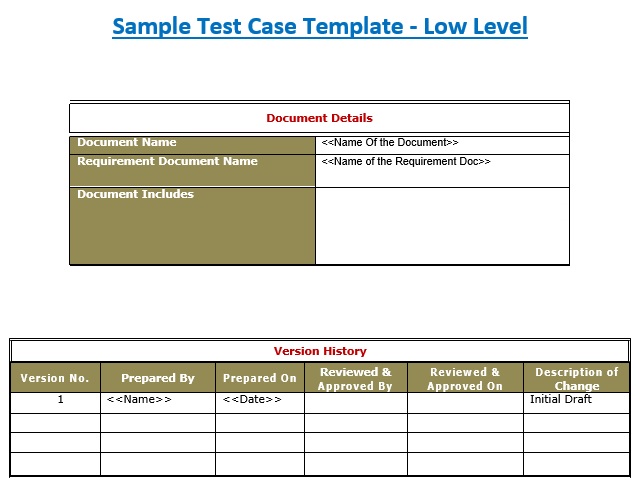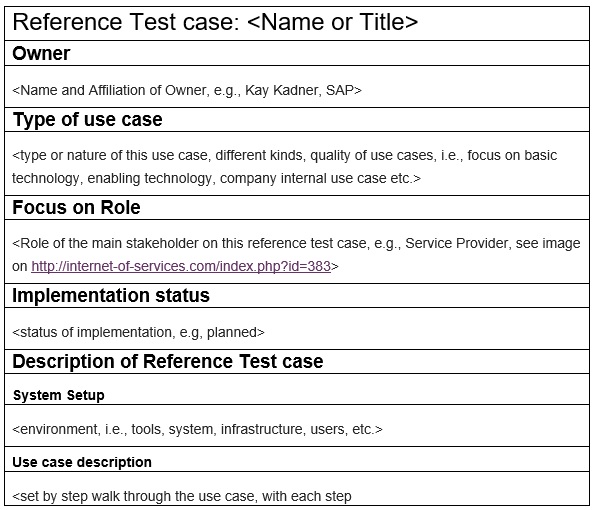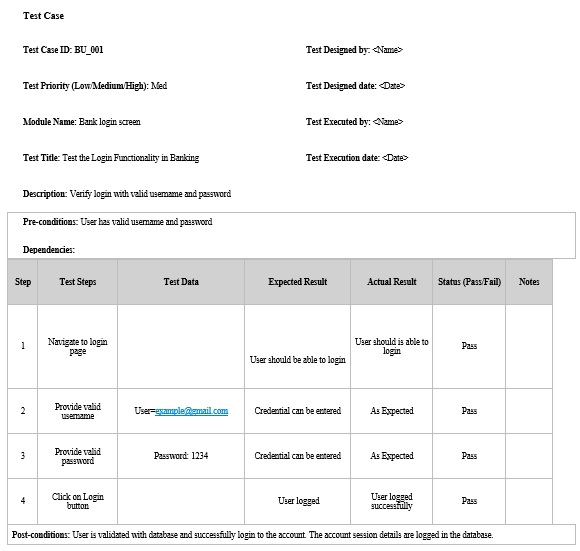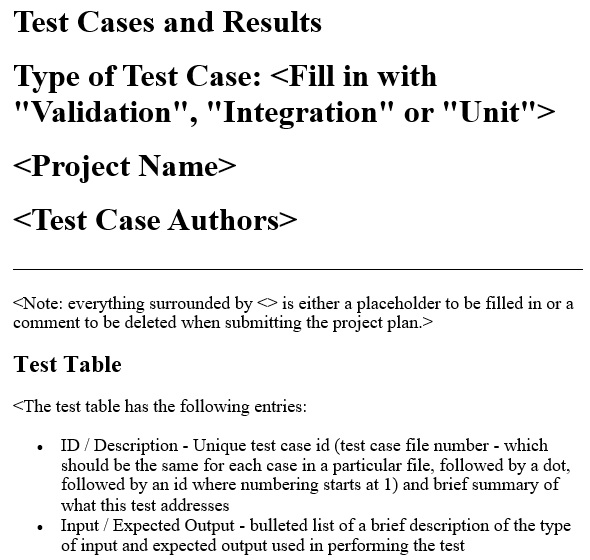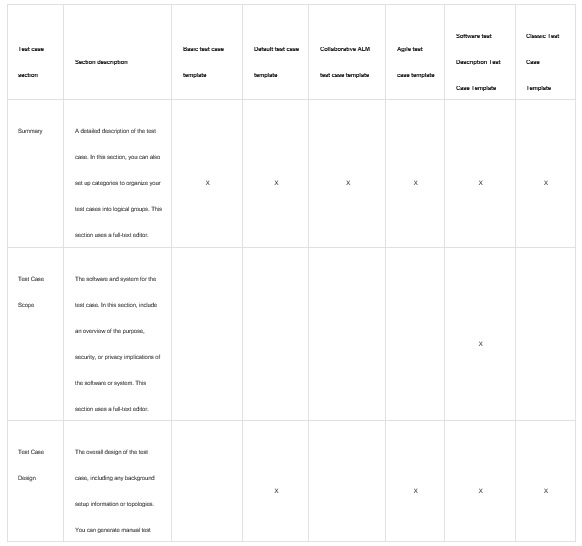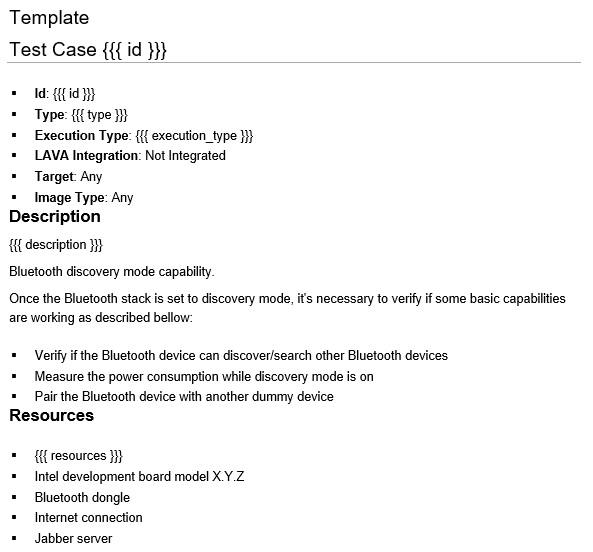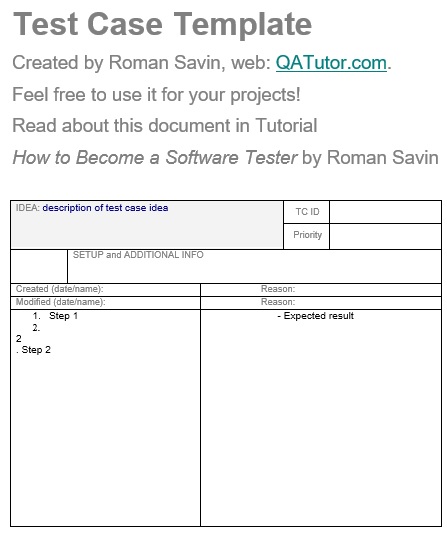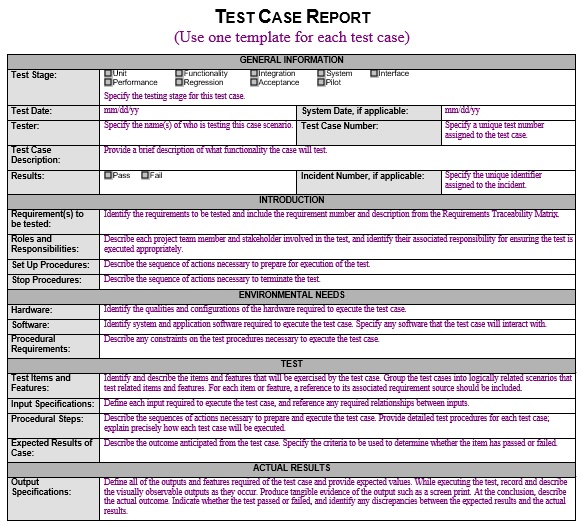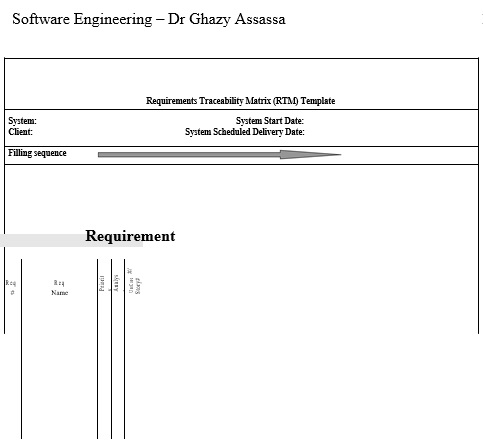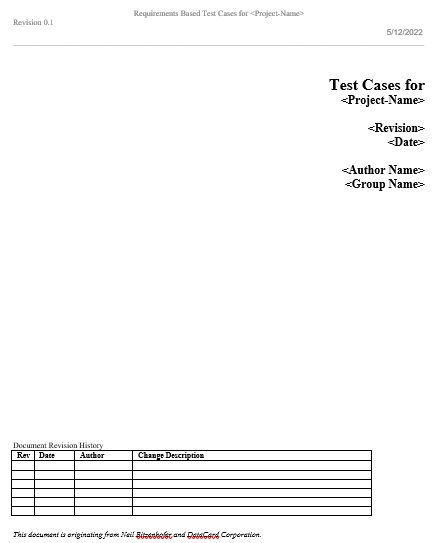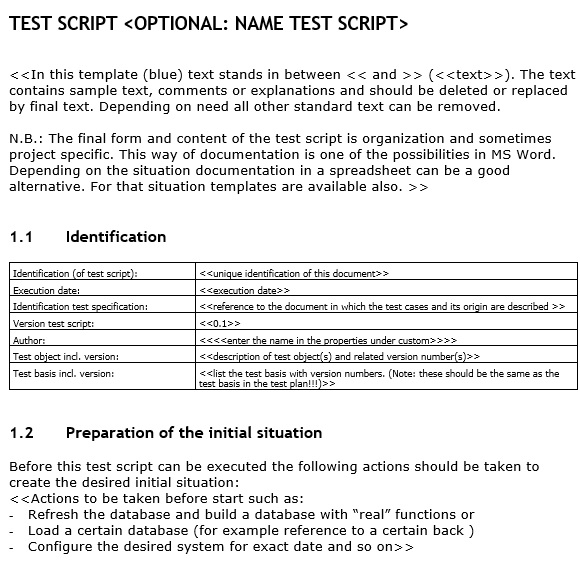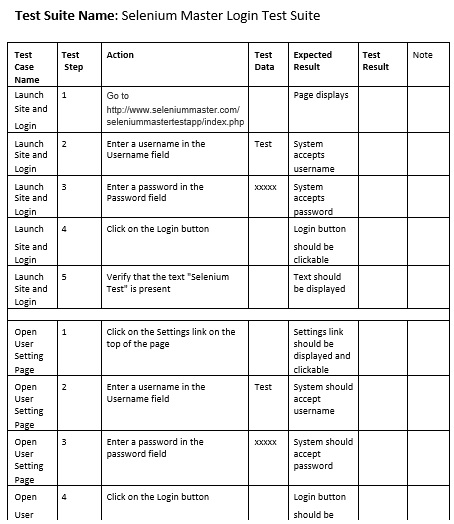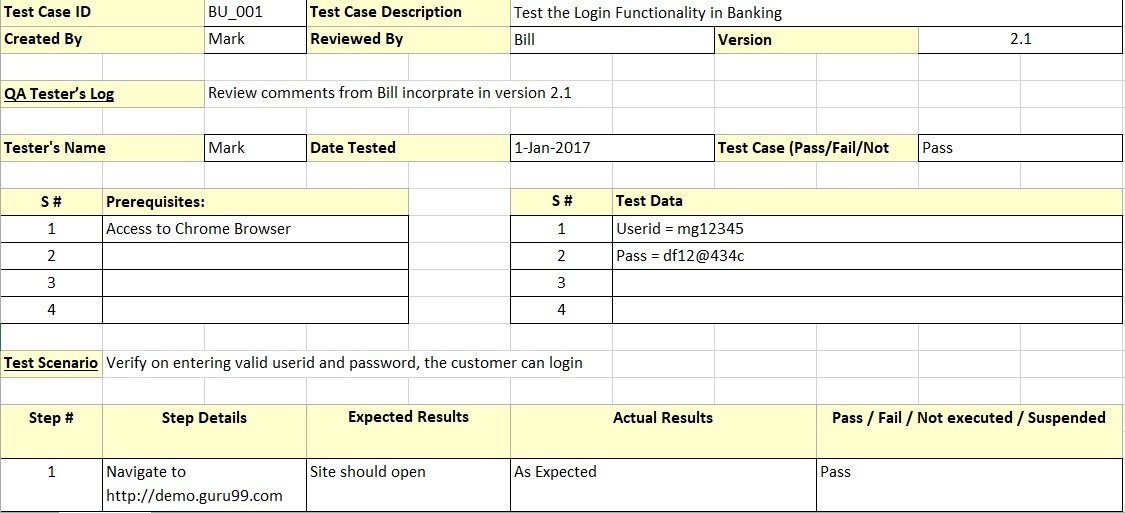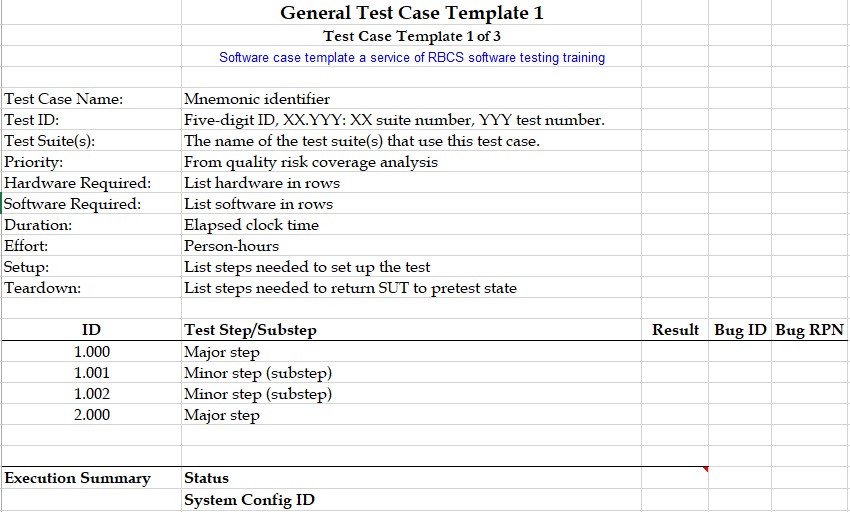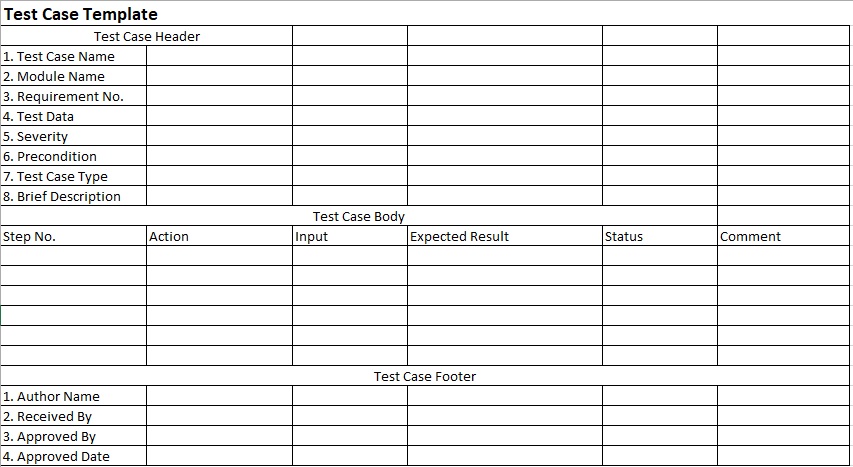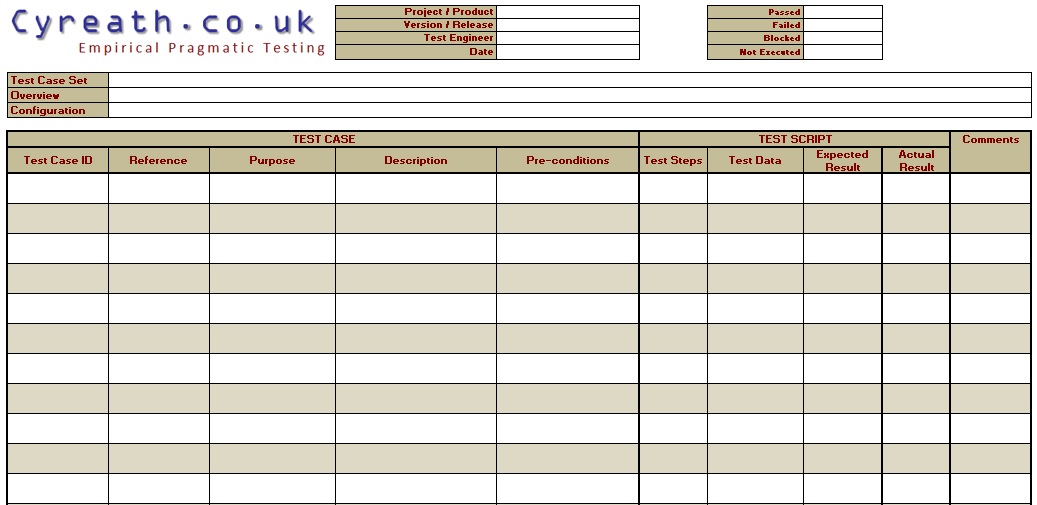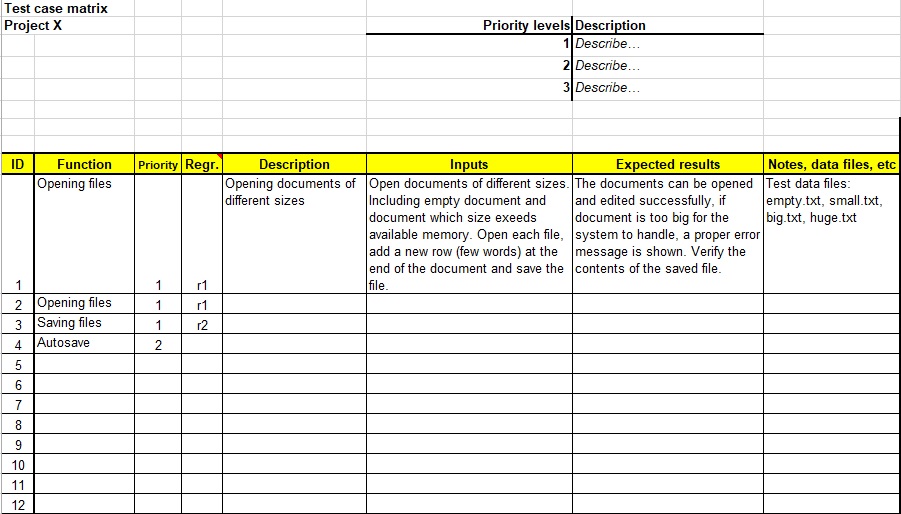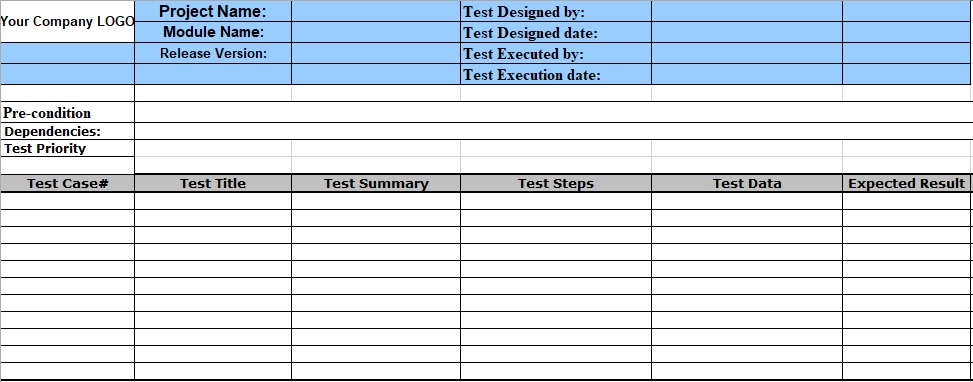A test case template is a document having several sequences of steps that help the tester in confirming whether the program is free of bugs. The most important objective while developing software is to minimize the number of bugs for the end-product. It is essential that you test it through the whole building phase.
What is a test case?
You will need to ensure that a product is bug-free in order to get the best out of it at the end of its production phase. Basically, a test case is a set of conditions or variables that helps a tester to identify whether a system under test satisfies the requirements or works accurately.
Moreover, creating a test case is not a complicated task. All you have to know is that this is the process where the tester gets in contact with a system. By having preset conditions, he tests the system and confirms the end result.
A test case seems a scientific method that not only detects bugs, but also creates a hypothesis on how to remove them. A person could test the following;
- When entering valid username and password, confirm login functionality?
- Test results while entering a valid username and invalid password
- See results when the username field is filled by password and the field is empty
What to include in a test case template?
If you are making a test case template, you should include the following;
Test case ID
A test case ID is essential. This is because it makes you able to document your results with ease. You will not only document it but be able to avoid testing the same things over and over again. If you want, an ID can be marked. However, if you are doing several systems then you can begin with the name with a short acronym or full name of the programs name. You can also put the objective of the test in the name of the template in case you’re doing multiple tests.
Test scenario
The test scenario field will contain all possible details regarding the testing. It won’t include any sequences or steps of the testing phase. But, it will contain a certain objective that the tester should bear in mind. This field could include details such as “Check admin login page with valid data”.
You should always try to keep this field as specific as possible in order to make it easier for the tester. Never include anything vague or unnecessary to the testing that can confuse the tester. Don’t add idioms so that the tester can do his job properly.
Test steps
A test scenario should only show details regarding the testing and exclude any steps. But, the Test Steps field is the next. You can tell the tester exactly what to do in steps with this area. You should always try to add a large number of steps that have specific objectives. The steps that have too many words, don’t write them. Also, don’t add commentary in this field. The test steps field should look like in the following ways;
- Start up the software
- Head over to the registration area
- Insert data in all fields
- Submit the data by clicking register
Test data
The test data is completely optional. This is because it depends on the system the tester will use. You must have a field in which you will place the information in case his objective demands any additional information that he requires to enter in order to complete his objective.
Results expected
This is most essential part as it will describe the tester on what outcomes he should expect, provided that the system is bug-free. On the given software, if the tester is trying to log into an account, then the expected outcomes could for an instance say that he should end up logging into his account.
This could take a twist. Probably, the tester is provided invalid data for the login fields, then he must have naturally expected that the website or software does not allow him log into his account. You also have to ensure that the expected results field should be precise as well. It contains everything that the software is intended to do in that step.
Results received
After fulfilling all the test steps and inserting all the test data, the tester should now get the results of his testing. The outcomes can be both positive and negative. They can confirm whether the program is working as intended or that it provides a completely different result.
Positive results have preferred the most. However, the negative results will assist you a lot by detecting that there is, in fact, a bug hidden in the code. For instance, if capturing a picture of a red button should convert its color into blue then the outcomes are as expected in case that’s what the system is assumed to do. But, there is a problem that should be fixed if the color of the button stays the same or if it changes into yellow.
Confirmation
A confirmation filed is not identical to the Results Received field. The Results Received field will just comprise of the tester saying if he got the expected results. On the other hand, a confirmation field will just point out whether the testing was a success or a fail.
We don’t speak about the actual testing process failing or succeeding. With this, we are talking about whether the system has or has not fulfilled its desired objective. This field just contains the words pass or fail. But, if you want, you can also inform the tester to write any comments about the process.
Which details should be included while making a test case?
Here are some tips and other information that you should consider while making a text case;
- Your test case consists of not more than 15 steps and it must be specific
- Attach any sort of evidence
- Include an explanation of what requirement is tested
- It must describe how the system will be tested
- Give inputs, outputs, actions, and expected outcomes
- Make use of active case language
The tester’s test setup should be compatible with the site or program and this is another essential thing. If you are testing out games or software that is demanding, then this is extremely essential.
Tips to follow to write a good test case:
Here are some tips to follow for writing a good test case;
Try to make it simple and clear
You have to make the test case simple and clear. You should make sure that the objectives you give to tester are clear and easy to understand and they don’t require more than 15 steps. Otherwise, the tester can’t execute them. It is advisable to use assertive language and keep it concise. Try to avoid unnecessary words. Keep in mind that you have to make it simple so that the tester execute the software faster.
Remember the end user
Aside from easy to understand, the test case must have objectives that make sure customer requirements. Make the objectives important that the end user will get in contact with and use specifically. In case, you are making a website or an internet forum then a login page is a good example. In this case, you have to ensure that the future users can register and login successfully.
Never repeat the same tests
There is no need to provide your testers any more case tests for specific area when you have made sure that the created software is bug-free in that area. Make use of a proper test ID in order to avoid repeating the same test cases. The test you have created make an ID for it and save it as the filename. In order to save you time, you should ensure that the objective of it is suspected in the ID’s name.
All software requirements should be confirmed
Making software which is compatible with most systems is another difficult thing. In the test case that you are creating put every single software requirement so that it would become easier for the tester to execute his objective faster. By doing so, you will get concise outcomes as while doing testing, you don’t get interfered by the wrong testing system.
The created ID is easily identified
In case, the created test case requires various steps and prerequisites, then ensure that all of your documents have IDs that you can identify easily. For instance, if you want from tester to modify the settings of your account on the system then you first have to login into your account.
Making use of testing methods
It is hard to test a program or software. This is because you have to consider all the possible bugs that can happen and the conditions that have to be made. There is the highest possibility of finding a bug in your software by using a testing technique. They are the following;
- Equivalence partition
- Error guessing technique
- Boundary value analysis
It should be repeatable
The same tests can be repeated various times and you should get the same outcomes when the objectives accomplished and the software works as desired. You will make sure that your software works in order to ensure that you always receive the similar results.
Review your test case design
Reviewing your test case design is extremely important if you are writing the test case for the first time. You should ask your colleagues to review it in order to make sure that it is easily understood and works as required. They will also assist you in finding any defects in your design or anything that you may have missed.
Is it beneficial to use software for managing your test case?
The inexperienced people can use test case management tools in order to maintain and manage your test case examples. Here are some of the benefits of these tools;
- You can them to document your current test cases.
- They help you in executing test cases and recording the outcomes immediately.
- Your test cases get protected from being lost or corrupted.
These software managing tools prove very helpful for both the experienced and inexperienced people they manage your test case automatically and keep it save.
Conclusion:
In conclusion, a test case template should be simple and transparent. It should have objectives that make sure customers’ needs. Don’t repeat the same tests when you have confirmed that the software made is bug-free in a specific area.
Faq (Frequently Asked Questions)
It is basically the process of making test cases. Make clear and simple test case for anyone who require to describe the results or add their input.
Your test case template should include the following standard fields;
1- Description of the test
2- Test case ID
3- QA tester log
4- Preconditions
5- Expected results
6- Results

